Area B
Kazhaw, Area B
Area B – located on the northern slope of Mound B – was excavated in 2015 and 2016. The aim of excavations in this area, originally laid out as a step trench, was to record the complete stratigraphy of the mound. For this purpose, a trench 23 m long and 1.5 m wide was excavated in 2015. In 2016, work was carried out at individual points inside the step trench and in a new trench to the east.
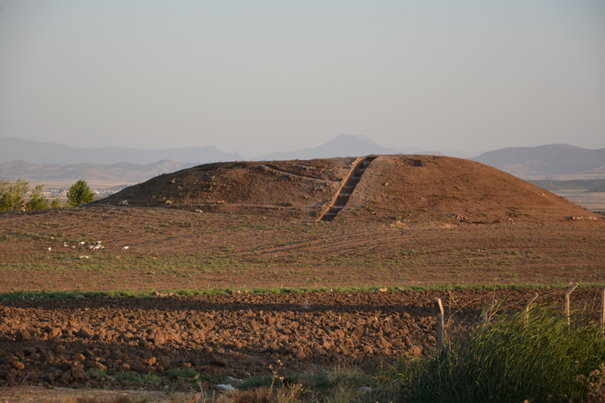
Late Burials
In the area of the hilltop, several burials were uncovered just below the surface. A distinction was made between four different types of burials, spread over two layers. In the older layer, only skeletons in a lateral position were found. The deceased were roughly facing south, so it can be assumed that they were Islamic believers.
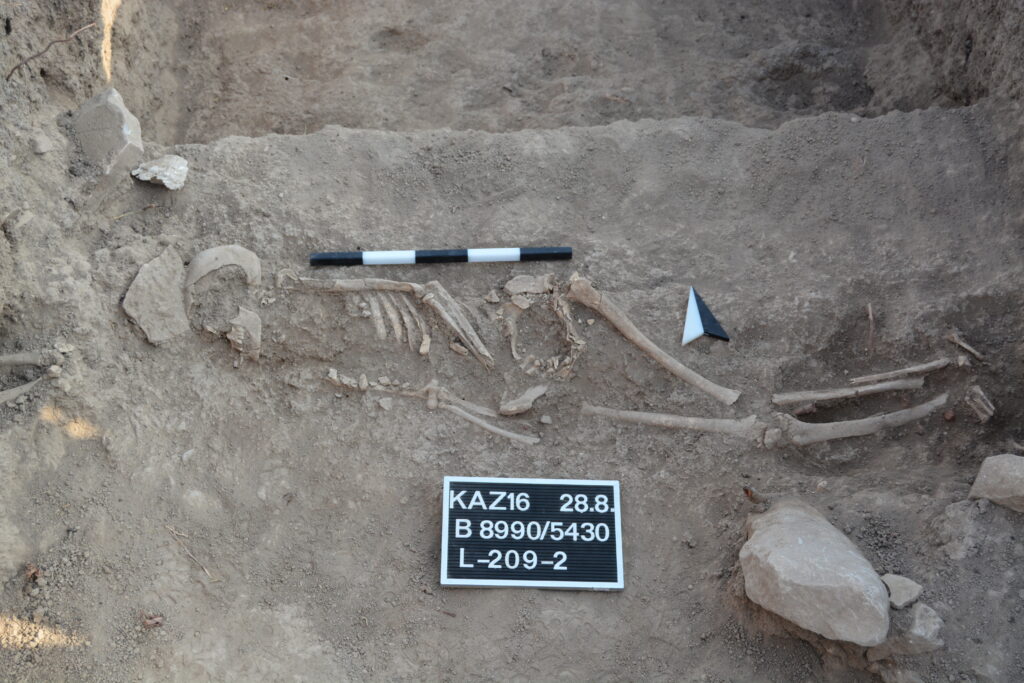
Three types of burials were found in the upper layer. Similar to the deceased of the older layer, those buried in stone cists lay in a lateral position facing Meqqa. The stone cists consisted of several stone slabs; the body was also covered with stone slabs, but not the head. Smaller stone boxes were also found, each containing a disorderly pile of human bones. Finally, several piles of human bones were also found, but they were not surrounded by a stone box.
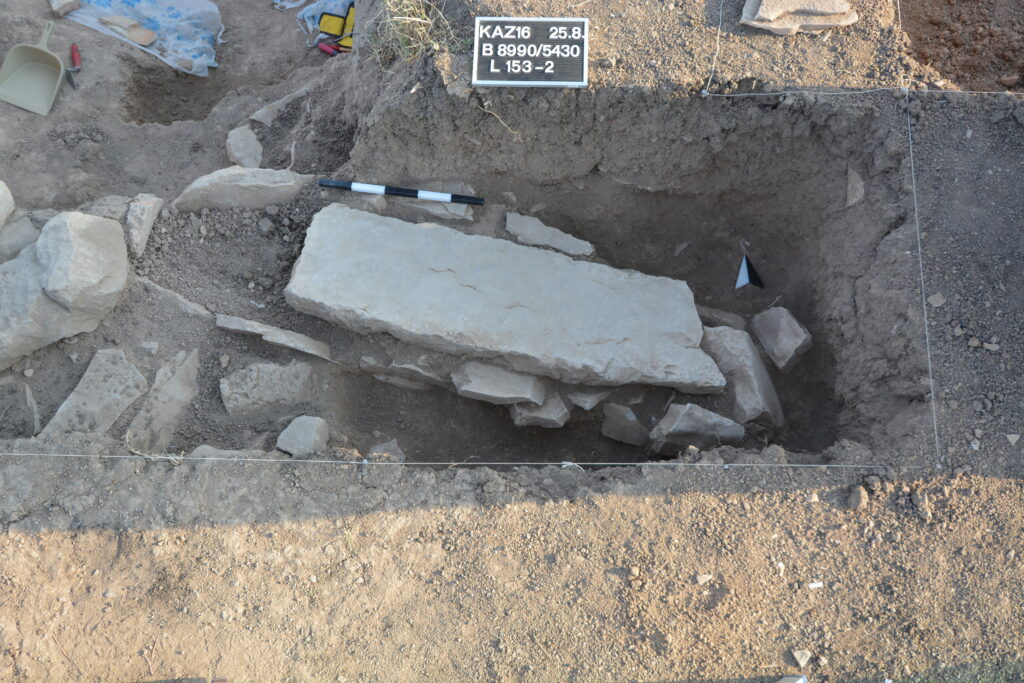
The latter types in particular must be secondary burials. In no case could an anatomical connection be established. The amount of bones in all cases was also too small to produce a complete skeleton. It is not possible to determine whether the deceased belonged to a different faith – for example Zoroastrianism – or whether the cemetery had been relocated.
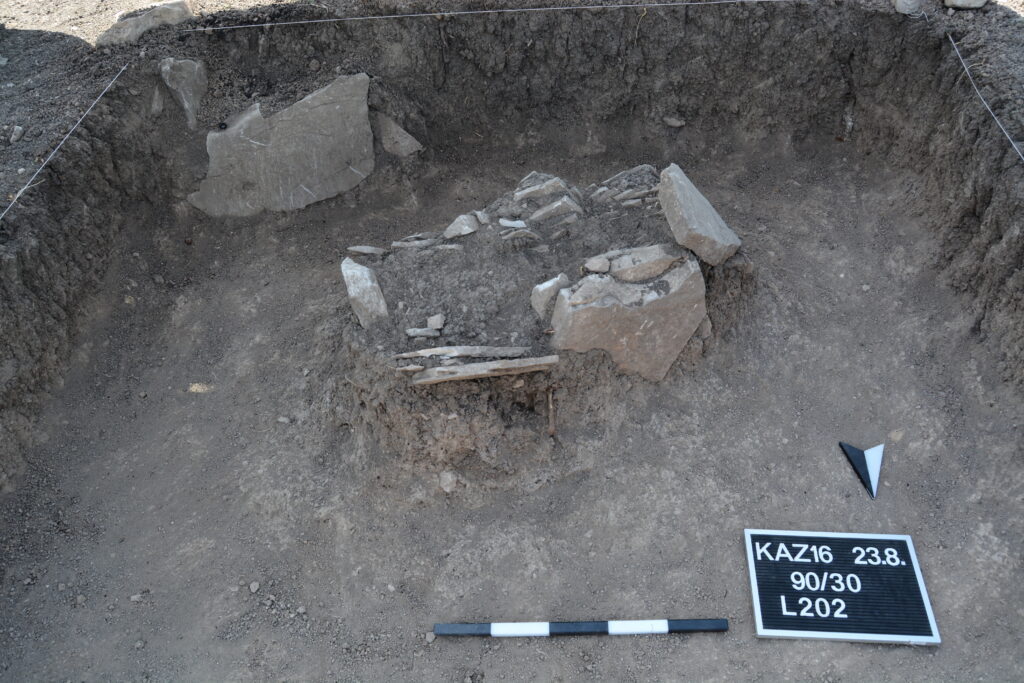
The Sasanian Fortress
A little below the Islamic burials, features of a small fortress from the late-Sasanian period were uncovered. Although only small sections of the fortification were uncovered within the trench, some conclusions can already be drawn.
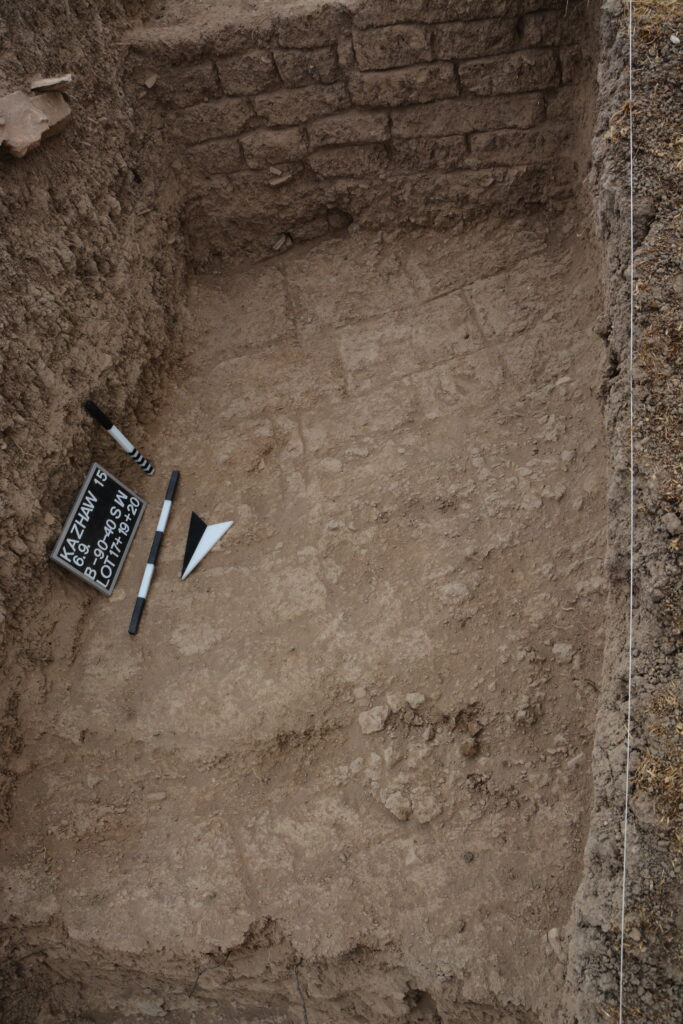
Before the fortification was built, older settlement layers were apparently removed on a massive scale. A small part of the material – pottery, flint blades etc. – were found in the bricks of the fortification. It appears that the excavated material was directly reused. The walls and floors of the Sasanian building were built almost directly on top of the older features.
At the time of the excavations, the main wall – made of mud bricks – was still almost 4 m high and around 3.5 m wide. The walls inside the fortress were also made of simple mud bricks; the floors were made of simple stamped earth. A fireplace probably served not only as a source of light at night and heat in winter, but also as a cooking area.
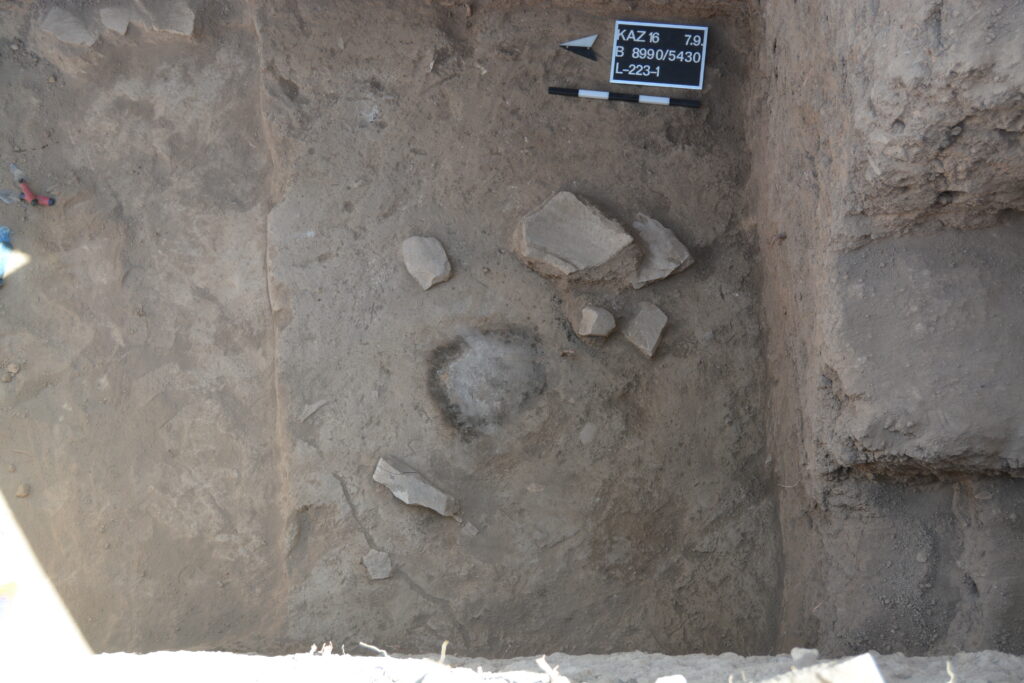
In the lower area of Mound B – about 7 m in front of the mudbrick wall – a curtain wall was uncovered. The approximately 1.5 m wide wall was built entirely of larger quarry stones; the preserved height suggests that there was originally a mud brick structure above the stones. The magnetics also suggest that this wall extended around the entire of Mound B.
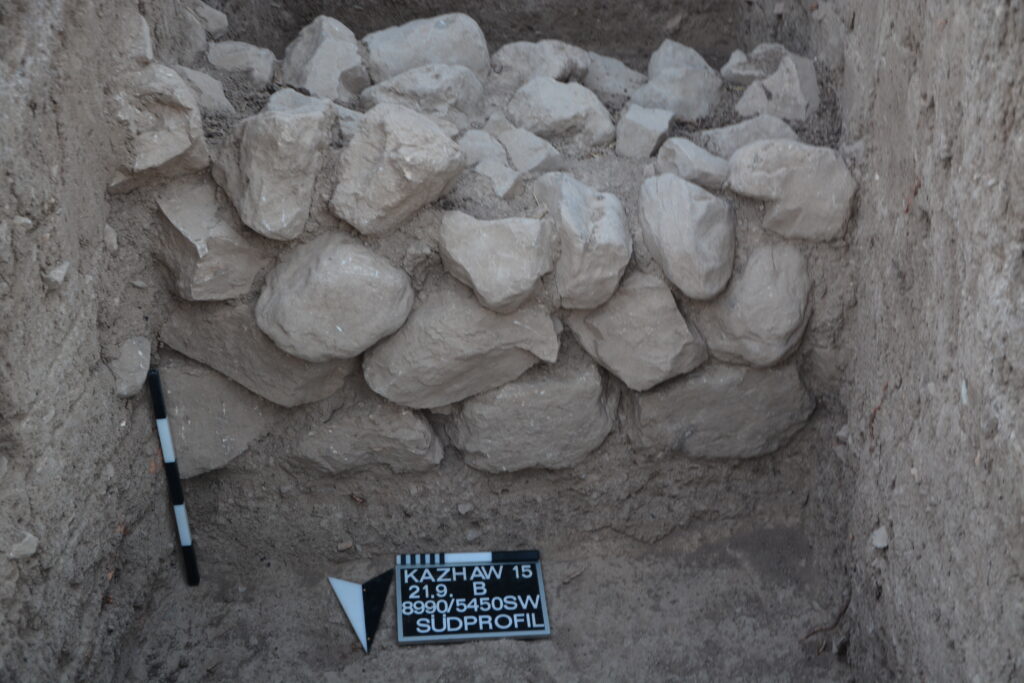
Beyond the stone wall, in the area of the base of the mound, no more structures could be found. Only various types of waste were recovered here – bones of different animal species, shattered pottery and numerous fragments of a tannur right next to the stone wall.
A further test trench in the area of the base of Mound B also yielded no results. Neither structures nor a stratigraphic sequence could be determined. However, finds from the Sasanian period were found just above the natural soil. It must therefore be assumed that the entire lower area of Mound B was never inhabited. Rather, it appears to be almost exclusively material that was disposed of during the Sasanian occupation and later eroded from the high mound.
All in all, on Mound B was a small fortress whose defensive character would not have been very prodigious. It is more likely that the garrison merely had an observational role and was supposed to alert the next higher authority if necessary. One reason for the fortification being located at this exact spot is probably the nearby spring of Bestansur, which must have been of immense importance for the water supply of the settlement on Yasin Tepe, which was located further south and was probably much larger.
The 2nd millennium BCE
Layers from the 2nd millennium BCE were uncovered in two places – on top of Mound B and in the lower part of the step trench. In the area of the hilltop, corresponding layers were uncovered just below the Sasanian walking surfaces. Due to a lack of time, only the upper edge of a mud-brick wall and debris layers on both sides of the wall could be recorded.
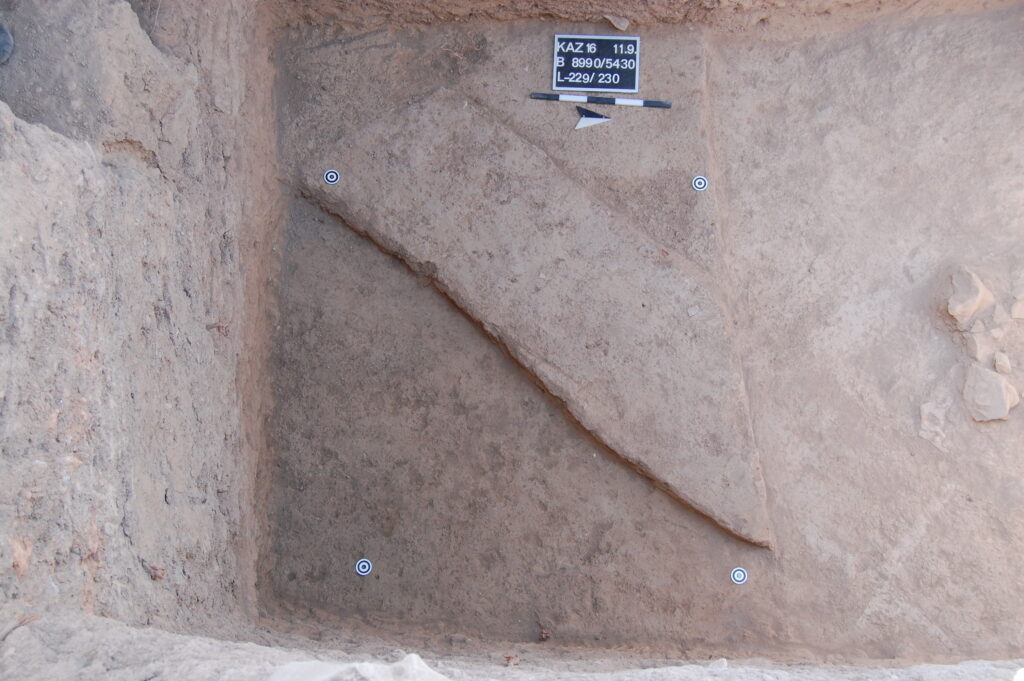
In the lower area of the step trench, the Sasanian fortress was apparently dug deep into earlier layers before the actual fortress was built. This revealed a sequence of construction and rubble layers that can be dated to the early 2nd millennium BCE on basis of the finds.
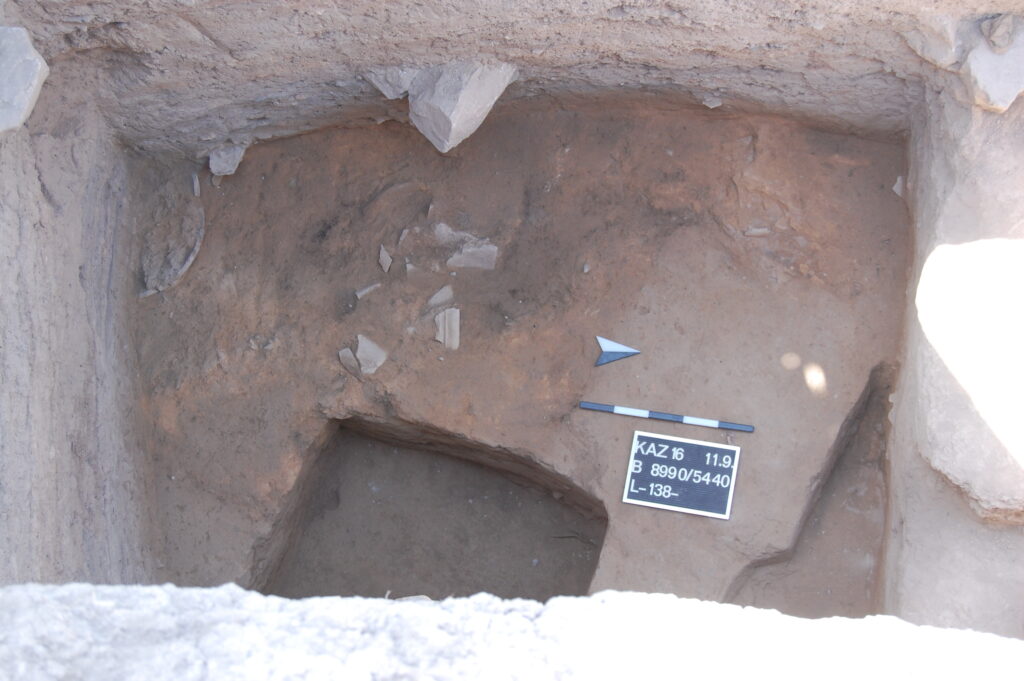
The earlier layers show a built-up area. Remains of walls made out of stamped earth were found here. The buildings probably fell victim to a catastrophic fire. The later layers must also have been areas within buildings. The remains of several storage vessels and a large quantity of snail shells were found, so it can be assumed that this was a storage room, even though no wall was excavated. This layer probably also fell victim to a fire.
The pottery recovered from both areas shows clear similarities with material of the same period from regions further west, such as the Hamrin and Diyala areas. Typical Shamlu pottery – as found on Mound A – was only recovered in very small quantities. Despite the simultaneous existence of the settlement on both mounds, there appears to have been a cultural difference. The stratigraphy in Area B also shows that the settlement in this area existed before and probably continued to exist for some time after the abandonment of the settlement in Area A.
